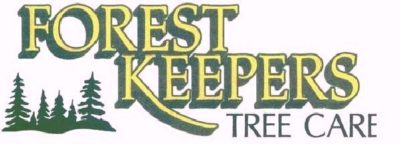If your anything like me you’ve been anxious to get out in the garden and get you hands in the soil. While it is still a bit to early for many garden chores, this is a great time to get out and prune your trees.
Lightly pruning trees can be done at any time of the year, but any major shaping or structural pruning is best done in March and April when the trees are still dormant. There are many benefits to pruning your trees regularly. A well pruned tree is stronger, and healthier. While trees can be pruned to maintain a natural look, a tree that is pruned regularly has a greater aesthetic value, and of coarse pruning helps control the size of the tree.
Here are some basic tips for pruning your ornamental or fruit trees this Spring;
-
- Trim dead and broken branches back to a side branch or trunk.
- Remove diseased branches or diseased branch parts.
- Remove watersprouts. Watersprouts are fast growing shoots that grow straight up from the branch. They rarely branch or flower. Unpruned watersprouts destroy the form of the tree and make spraying more difficult. Wait to remove watersprouts until May, June, or July. Spring pruning of watersprouts may stimulate regrowth.
- Remove suckers. Suckers are sprouts coming from the roots or lower trunk at or below the ground line. Like watersprouts, suckers should be trimmed out during summer.
- Prune out crossing or conflicting branches. Choose the least desirable or smallest branch to remove.
- Look for crotch angles between branches that are less than 40 degrees. Cut one of the branches out. Wide crotch angles of 40-90 degrees are structurally stronger so the branch holds more fruit weight.
- Trim out slow growing, weak, or non-productive branches.
- Prune back low growing branches or parts that touch the ground.
- When deciding on which major branches to keep, select ones growing away from the prevailing winds. When in leaf, branches pointed into the wind tend to be blown back toward the tree, therefore distorting the growth.
- In the first five years of your tree’s life, prune only enough to correctly shape the tree.
Make sure that your cuts are made back to the branch collar. Do not leave stubs on your tree. Not only are they unsightly, but they are not healthy for the trees. Look at this simple diagram bellow by Alex Shigo to under stand a properly made pruning cut. Be careful not to tear the bark down the trunk while making larger cuts with a hand saw. Look at these improperly made pruning cuts below. Notice the cuts and how they stick out to far from the main stem. These are stubs and they are unhealthy for the tree as decay can enter into the stem more readily through cuts like these. Also notice the tear on the stem.
Look at these improperly made pruning cuts below. Notice the cuts and how they stick out to far from the main stem. These are stubs and they are unhealthy for the tree as decay can enter into the stem more readily through cuts like these. Also notice the tear on the stem.

Notice the bark tear as well as the stubs left that stick to far out from the trunk. This tree will have a hard time growing callous wood over these poorly made pruning cuts.
One additional note about tree pruning. When it comes to pruning larger trees; please call a professional arborist. Tree climbing can be very dangerous and should be left to a trained professional.
Please, stay off the ladders if your going to use a chain saw.

Comments
It’s really sad when one sees these hanging bits of bark. When the council strims our local hedges (large lorry with whirring blade sticking out at the side) lots of branches are left like this.
I’ve included Tree Care Tips in a list of related blogs on Loose and Leafy
http://looseandleafy.blogspot.com/
You can find it by clicking a tab under the header. I’m wondering if you would like an emblem / logo / identifying picture put beside it.
Lucy
I don’t understand why you make cuts 1 and 2 – which don’t go all the way through the branch and you are intending to make cut 3 anyway.
Lucy
Hi Lucy, I’ve been gone for awhile and am only getting back into things now. Otherwise I would have responded to your questions much sooner.
The 123 cut pruning method helps to avoid tearing the bark on tree limbs. If you look at the photo in this post of improper pruning cuts you will see what I mean. That ugly and detrimental tear under the branch could have and should have been avoided. When a branch tears down the stem it greatly increases the decay that will advance into the tree stem.
The more weight that is out on a limb increases it’s chances of tearing. Also some species of tree tend to tear easier than others. On small shrubs and ornamentals when you are using hand pruners this is usually not necessary. Only when you are making a hand saw or chain saw cut.